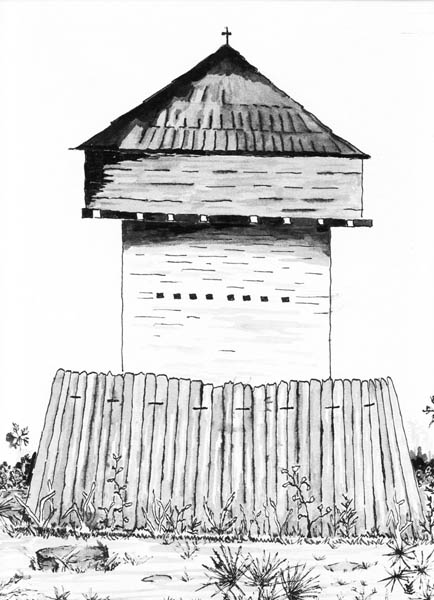
The Chrysalis of Conflict: Unearthing Fort St. Francis, Pupa
In the shimmering embrace of the Lesser Antilles, where turquoise waters lap against shores fringed with emerald foliage, lies a whisper of history often overlooked. It is a tale etched in weathered stone and forgotten battlements, known to a select few as Fort St. Francis, but to the locals of the fictional island of Sanctum Aevum, it is simply "The Pupa." This evocative moniker, referring to the insect’s transformative stage, hints at a deeper narrative than mere military architecture – a story of resilience, metamorphosis, and the enduring spirit of a land shaped by colonial ambition and indigenous resistance.
To speak of Fort St. Francis, Pupa, is to delve into a chapter of Caribbean history that never quite made it into the mainstream textbooks, a testament to the myriad micro-histories that constitute the grand tapestry of human endeavor. Its precise location, nestled within a secluded cove on Sanctum Aevum’s northern coast, was a strategic masterpiece, allowing command of a vital shipping lane while remaining largely hidden from open sea reconnaissance.
A Bastion Born of Blood and Ambition

The genesis of Fort St. Francis dates back to the mid-17th century, a tumultuous period when European powers – primarily France, Britain, and Spain – vied for dominance over the lucrative sugar islands of the Caribbean. Sanctum Aevum, though modest in size, possessed fertile volcanic soil and a deep-water harbor, making it a coveted prize. It was the French, under the ambitious governorship of Marquis René de Beaumont, who first laid claim to the island in 1648, establishing a small settlement and a rudimentary defensive outpost.
However, these initial fortifications proved woefully inadequate against the relentless raids of buccaneers and the burgeoning naval might of rival colonial powers. The turning point came in 1665, following a devastating English incursion that razed much of the French settlement. It was then that Governor de Beaumont, with the full backing of King Louis XIV, commissioned the construction of a formidable, state-of-the-art fort.
"De Beaumont understood that a lasting French presence here required more than just flags and decrees; it demanded an unyielding stone fist," explains Dr. Élise Dubois, a historical archaeologist from the University of Paris-Sorbonne, who has dedicated the last decade to unearthing the fort’s secrets. "He envisioned a structure that could withstand not only cannon fire but also the brutal tropical climate and the psychological toll of isolation. Fort St. Francis was to be that fist, a symbol of French resolve."
The construction, which spanned nearly a decade, was an arduous undertaking. Indigenous Kalinago laborers, alongside enslaved Africans brought from the West African coast, toiled under the blistering sun, hauling volcanic rock from the island’s interior and coral limestone from the reefs. European military engineers, schooled in the latest Vauban-style defensive principles, meticulously designed its star-shaped bastions, thick curtain walls, and intricate system of casemates and powder magazines. The fort was named in honor of St. Francis Xavier, a revered Jesuit missionary, reflecting the strong Catholic influence of the French crown.
The Enigma of "The Pupa"
But how did this imposing military stronghold come to be known as "The Pupa"? The answer lies in a blend of local lore, strategic reality, and the fort’s evolving role on the island.
Initially, the fort was a small, almost unassuming structure, a mere "chrysalis" of what it would become. Its early, more vulnerable form was often likened by the Kalinago, who observed its gradual expansion from the surrounding hills, to the cocoon of an insect – small, yet containing the potential for something powerful. "The Kalinago, with their deep connection to nature, saw the fort not just as a foreign imposition but as a living entity undergoing transformation," recounts Jean-Luc Moreau, a respected elder and oral historian from Sanctum Aevum’s indigenous community. "They called it ‘Karu’man,’ meaning ‘the stone chrysalis,’ a name that eventually morphed into ‘Pupa’ under the influence of later Creole French."
Beyond the indigenous perspective, the nickname also resonated with the strategic reality of the fort. Fort St. Francis was never meant to be a launching pad for grand offensives. Its primary purpose was defensive: to protect the harbor, the nascent town, and the precious sugar plantations. It was a place where the island’s very survival was encapsulated and nurtured, much like a pupa safeguards the development of a butterfly. From within its walls, the destiny of Sanctum Aevum was constantly being refined and protected.

A Crucible of Conflict
Fort St. Francis, Pupa, soon proved its worth. Throughout the late 17th and 18th centuries, it became a focal point in the relentless struggle for Caribbean supremacy. Its cannons roared in defiance against British frigates, Dutch privateers, and the occasional pirate fleet seeking plunder.
One of the most notable engagements occurred in 1702, during the War of the Spanish Succession. A British squadron, commanded by Vice-Admiral Benbow, attempted a surprise landing in the cove protected by the fort. The garrison, though outnumbered, held firm. "The French artillery, under the command of Captain Armand Dubois, laid down a murderous fire," notes Dr. Dubois, whose ancestor likely participated in the defense. "Their meticulous training and the fort’s formidable design allowed them to repel several landing attempts. It was a pivotal moment, cementing the fort’s reputation as impregnable." The British, suffering heavy casualties, were forced to withdraw, leaving Sanctum Aevum firmly in French hands for another half-century.
Life within the fort’s walls was a harsh blend of disciplined routine and constant vigilance. Soldiers, a mix of metropolitan French troops and local militia, endured the oppressive heat, tropical diseases, and the ever-present threat of attack. Diaries unearthed during excavations reveal the mundane details of daily existence: meager rations, the camaraderie forged in shared hardship, and the profound loneliness of being thousands of miles from home. "Sergeant Pierre Dubois, in his journal entry from 1703, describes the heat as ‘a living beast that suffocates the very soul’ but then recounts a lively evening of song and rum, reminding us of the human spirit’s capacity for joy even in adversity," Dr. Dubois shares, highlighting the personal stories behind the grand historical narrative.
The Metamorphosis of Neglect
By the late 18th century, the geopolitical landscape of the Caribbean began to shift. With the rise of larger, more strategically significant islands and the eventual decline of French colonial power in the region, Fort St. Francis gradually lost its prominence. After the Napoleonic Wars, when Sanctum Aevum finally passed into British hands, the fort was deemed obsolete. Its strategic value diminished by the advent of more powerful naval artillery and the changing nature of warfare, it was slowly abandoned.
Nature, ever patient, began its reclamation. Vines snaked through cannon embrasures, tropical trees rooted themselves in cracks in the masonry, and the sounds of jungle birds replaced the bugle calls. For nearly two centuries, Fort St. Francis, Pupa, lay dormant, a green-shrouded ruin, slowly transforming from a bastion of war into a silent sentinel of history. The "pupa" had entered its quiescent stage, a period of profound internal change unseen by the outside world.
Reawakening: From Ruin to Reverence
It was not until the late 20th century that the fort began its slow reawakening. Local historians, spurred by a growing sense of national identity and a desire to preserve their heritage, initiated efforts to clear the overgrowth and document the ruins. Archaeological expeditions, spearheaded by institutions like the University of Paris-Sorbonne and the Sanctum Aevum Historical Trust, commenced in earnest in the early 2000s.
"What we found was astounding," Dr. Dubois exclaims, her eyes lighting up. "Beneath layers of soil and vegetation, we discovered not just architectural marvels but a treasure trove of artifacts: musket balls, ceramic shards, buttons from soldiers’ uniforms, even a perfectly preserved surgeon’s kit. Each item tells a piece of the fort’s story, bringing the past vividly to life."
Today, Fort St. Francis, Pupa, is recognized as a national heritage site on Sanctum Aevum. While much work remains, parts of the fort have been carefully restored, allowing visitors to walk through its echoing passages, stand on its bastions, and gaze out at the same strategic vista that its 17th-century defenders once protected. Educational programs are in place to teach local schoolchildren about their island’s complex history, and guided tours bring the fort’s stories to life for tourists.
The Enduring Metaphor
The "Pupa" moniker, once a local legend, has now gained a deeper resonance. The fort, once a small, vulnerable outpost, grew into a formidable protector. Then it entered a long period of dormancy, forgotten and overgrown. Now, it is emerging once more, transforming from a neglected ruin into a vibrant symbol of heritage, a site of education, and a testament to the enduring human spirit.
"Fort St. Francis, Pupa, is more than just old stones," Jean-Luc Moreau reflects, looking out at the fort from a distant hilltop. "It is a reminder that even in the smallest, most unassuming places, great struggles and profound transformations can occur. It reminds us that our history, like the pupa, holds the promise of something beautiful and strong, if we only take the time to nurture it and allow it to emerge."
In a world increasingly homogenised, the story of Fort St. Francis, Pupa, stands as a powerful reminder of the unique narratives hidden in every corner of the globe. It invites us to look beyond the grand narratives and to listen to the whispers of forgotten places, for within them lies the true, rich tapestry of human experience, constantly transforming, constantly re-emerging, like a butterfly from its chrysalis.


